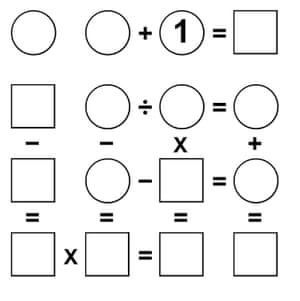Did you solve it? Where's the best place to tie your shoe in an airport?
Marlene Breverman stashed this in Puzzle-ing
You are in an airport, and you are walking from security to your gate. The distance includes stretches of travelator, or moving walkway, and stretches of floor. You have a constant walking speed, u, and the travelators also have constant speed, v. So, when you are on the travelator you are traveling at u + v.
The shoelace puzzle was first posed by Terence Toe, I mean Terence Tao. (Couldn’t resist, sorry). He is one of the most celebrated mathematicians alive. He featured this problem on his blog in 2008, two years after winning the Fields Medal.
Stashed in:
1. You need to stop to tie your shoe. If tying your shoe always takes the same time, will you get to the gate quicker if you tie your shoe on the travelator, off the travelator or does it make no difference?
2. You have enough energy to walk at faster speed, w, for a fixed time. In order to get to the gate quicker, do you increase your speed when you are on the travelator, off the travelator or does it make no difference?
How well did you do?
About 15,000 of you submitted answers. The majority - just - got the first one correct. For the second question, however, the correct answer was the one chosen by the fewest people. Interesting.
Q1: where do you tie your shoe?
on the travelator: 47.3%
off the travelator: 11.4%
doesnt matter: 41.3%
Q2: where do you speed up?
on the travelator: 28.7%
off the travelator: 17.2%
doesn’t matter: 54.1%
Here is a more thorough explanation of the answers using some algebra. Again let’s assume there is a single stretch of floor and a single stretch of travelator. Let’s start by defining the terms.
T = time it takes to tie laces.
u: human speed
v: travelator speed
Df: Floor distance
Dtr: travelator distance
The relevant equation:
Speed = distance/time, and so, time = distance/speed
Question 1: Total time = time on floor + time on travelator + time tying laces = (distance on floor/speed on floor) + (distance on travelator/speed on travelator) + T = Df/u + Dtr/(u + v) + T
If laces tied on floor, the total time: Df/u + T + Dtr/(u + v)
If laces tied on the travelator, the total time: (Df/u) + T + (Dtr – Tv)/(u + v)
Since Dtr > Dtr – Tv, the total time if laces tied on floor is greater, so you get there quicker if you tie laces on the travelator
Question 2: Now let T = time spent at higher speed w.
Total time if speeding on floor: T + (Df – Tw)/u + Dtr/(u + v)
Total time is speeding on travelator: (Df/u) + T + (Dtr – T(w+ v))/(u + v)
Since w > u then w/u > (w + v)/(u + v) and (I promise) this shows that total time is less when you walk fast on the floor.
Because of the time and space constraints of this blog I haven’t been able to explain each step in detail. I’m sure some commentators will be able to help out below the line if you are still confused. Thanks all!
Think of it this way: your rate of travel is boosted by a larger factor when you apply the boost *off* the travelator.
Totally out of my league here, but... on the travelator, it sounds like two steps forward, one step back.
Yeah, both those explanations make sense to me.
You're best off maximizing walking time on the travelator because of the multiplier.











9:18 AM Jul 18 2016